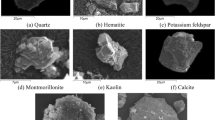Abstract
An echo sounding device coupled with a differential GPS was applied for a spatial survey of the shallow Spremberg Reservoir to characterize areas of similar sediment composition and phosphorus (P) mobility to help elucidate its influence on water quality. Forty three intact sediment cores were taken to determine dry weight (DW) and total P. Four areas were differentiated based on the sonar and dry weight data. From each of the areas, specific surface area, P sorption characteristics and P pools by means of a sequential P extraction as well as the total and diagenetically reactive iron were determined. A high P sorption capacity of up to 7.4 mg P g−1 DW could be determined at up to 180 mg Fe g−1DW and high proportions of iron-bound P in the surface sediment. The P release rates calculated from pore water profiles were extremely low. The high P binding capacity, the low P mobility and the short water residence time have favoured the improvement of water quality in recent years.
Similar content being viewed by others
References
Berner, R. A., 1980. Early diagenesis. A theoretical approach. Princeton University Press, New York: 241 pp.
Boström, B., I. Ahlgren & R. Bell, 1985. Internal nutrient loading in an eutrophic lake, reflected in seasonal variation of some sediment parameters. Verh. int. Ver. theor. angew. Limnol. 22: 3335–3339.
Brunauer, S., P. H. Emmett & E. Teller, 1938. Adsorption of gases in multimolecular layers. J. Am. Chem. Soc. 60: 309–319.
Cholwek, G., J. Bonde, X. Li, C. Richards & K. Yin, 2000. Processing RoxAnn sonar data to improve its categorization of lake bed surficial substrates. Mar. Geophys. Res. 21: 409–421.
Dzombak, D. A. & F. M. M. Morel, 1990. Surface complexation modelling: hydrous ferric oxides. Wiley, New York: 393 pp.
Gabellone, N. A. & C. Guisande, 1989. Relationship between texture and fractions of inorganic phosphorus in the surface sediment of a reservoir. Aquat. Sci. 51: 306–316.
Håkanson, L. & M. Jansson, 1983. Principles of Lake Sedimentology. Springer, Berlin: 316 pp.
Hantke, H., G. Schlungbaum & K. Storch, 1996. Möglichkeiten der Anwendung eines speziell entwickelten Flachwasserecholotsystems zur Binnen-und Küstengewässercharakterisierung sowie zur Kontrolle und Darstellung der im Wasserkörper und Oberflächensediment durchgeführten Probenahme-, Meß-und Sanierungsarbeiten. Deutsche Gesellschaft für Limnologie. Tagungsbericht 1996: 630–634.
Heidenreich, M. & A. Kleeberg, 2001. Wasser-und Sedimentqualität der Talsperre Spremberg. In Krumbeck, H. & U. Mischke (eds), Gewässerreport (Nr. 6): Entwicklungen im Scharmützelseegebiet und angewandte Probleme des Gewässerschutzes. BTUC-AR 6/2001: 81–90.
Hesslein, R. H., 1976. An in situ sampler for close interval porewater studies. Limnol. Oceanogr. 21: 912–914.
Hupfer, M., R. Gächter & R. Giovanoli, 1995. Transformation of phosphorus species in settling seston and during early sediment diagenesis. Aquat. Sci. 57: 305–324.
Lijklema, L., 1980. Interaction of Orthophosphate with Iron(III) and Aluminium Hydroxides. Environ. Sci. Technol. 537–541.
Marsden, S., 1989. Lake restoration by reducing external phosphorus loading: the influence of sediment phosphorus release. Freshwat. Biol. 21: 139–162.
Perkins, R. G. & G. J. C. Underwood, 2000. Gradients of chlorophyll a and water chemistry along an eutrophic reservoir with determination of the limiting nutrients by in situ nutrient addition. Wat. Res. 34: 713–724.
Psenner, R., R. Puscko & M. Sager, 1984. Die Fraktionierung organischer und anorganischer Phosphorverbindungen von Sedimenten – Versuch einer Definition ökologisch wichtiger Fraktionen. Arch. Hydrobiol. Suppl. 70: 111–155.
Pyman, M. A. & A. M. Posner, 1978. The surface area of amorphous mixed oxides and their relation to potentiometric titration. Journal of Colloid and Interface Science 66: 85–94.
Søndergaard, M., J. P. Jensen & E. Jeppesen, 2003. Role of sediment and internal loading of phosphorus in shallow lakes. Hydrobiologia 506–509: 135–145.
Thamdrup, B., H. Fossing & B. B. Jørgensen, 1994. Manganese, iron, and sulfur cycling in a coastal marine sediment, Aarhus Bay, Denmark. Geochimica et Cosmochimica Acta 58: 5115–5129.
Uhlmann, D., M. Hupfer & L. Paul, 1995. Longitudinal gradients in the chemical and microbial composition of the bottom sediment in a channel reservoir (Saidenbach R., Saxony). International Revue der gesamten Hydrobiologie 80: 15–25.
Zhang, C., L. Wang, G. Li, S. Dong, J. Yang & X. Wang, 2002. Grain size effect on multi-element concentrations in sediments from the intertidal flats of Bohai Bay, China. Appl. Geochem. 17: 59–68.
Author information
Authors and Affiliations
Rights and permissions
About this article
Cite this article
Heidenreich, M., Kleeberg, A. Phosphorus-binding in iron-rich sediments of a shallow Reservoir: spatial characterization based on sonar data. Hydrobiologia 506, 147–153 (2003). https://doi.org/10.1023/B:HYDR.0000008621.44435.23
Issue Date:
DOI: https://doi.org/10.1023/B:HYDR.0000008621.44435.23




